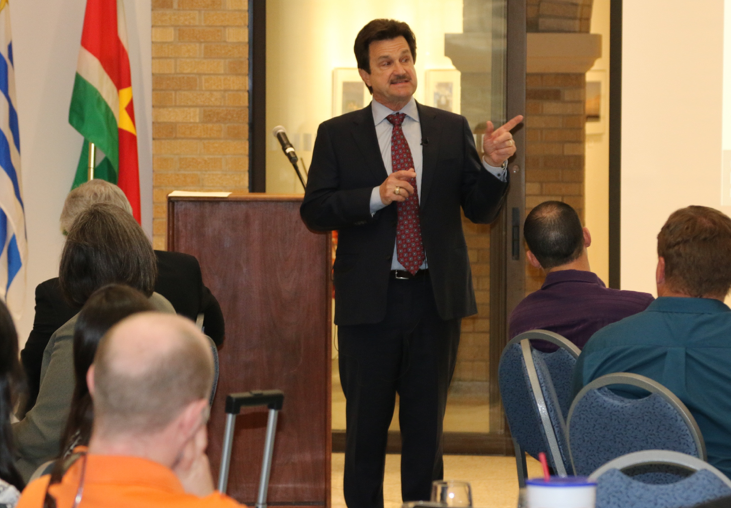In Spring 2018, Texas Tech University and the Charles A. Dana Center hosted a West Texas Regional Transfer Convening. Eight community colleges and five universities reviewed research on student transfer and mathematics course requirements by program, held cross–institutional discussions on transfer and mathematics pathways alignment, and planned for seamless transfer in the region through an exploration of key metrics and regional data.
Texas Tech President Dr. Lawrence Schovanec, who began his career as an assistant professor and then chair of the Department of Mathematics and Statistics, highlighted key issues related to mathematics pathways work at this convening. Institutions are facing mathematics pathways challenges such as alignment, transfer and maintaining collaborative communication between two– and four–year institutions. Dr. Schovanec emphasized how critical this work is, explaining that “the business of trying to create meaningful pathways is very important. One of the most difficult things for students going from a community college should not be issues related to transferability of credits. That should be a minor matter but it’s not.”
For further information on the work to seamlessly align transfer in regions of Texas, see this page.


